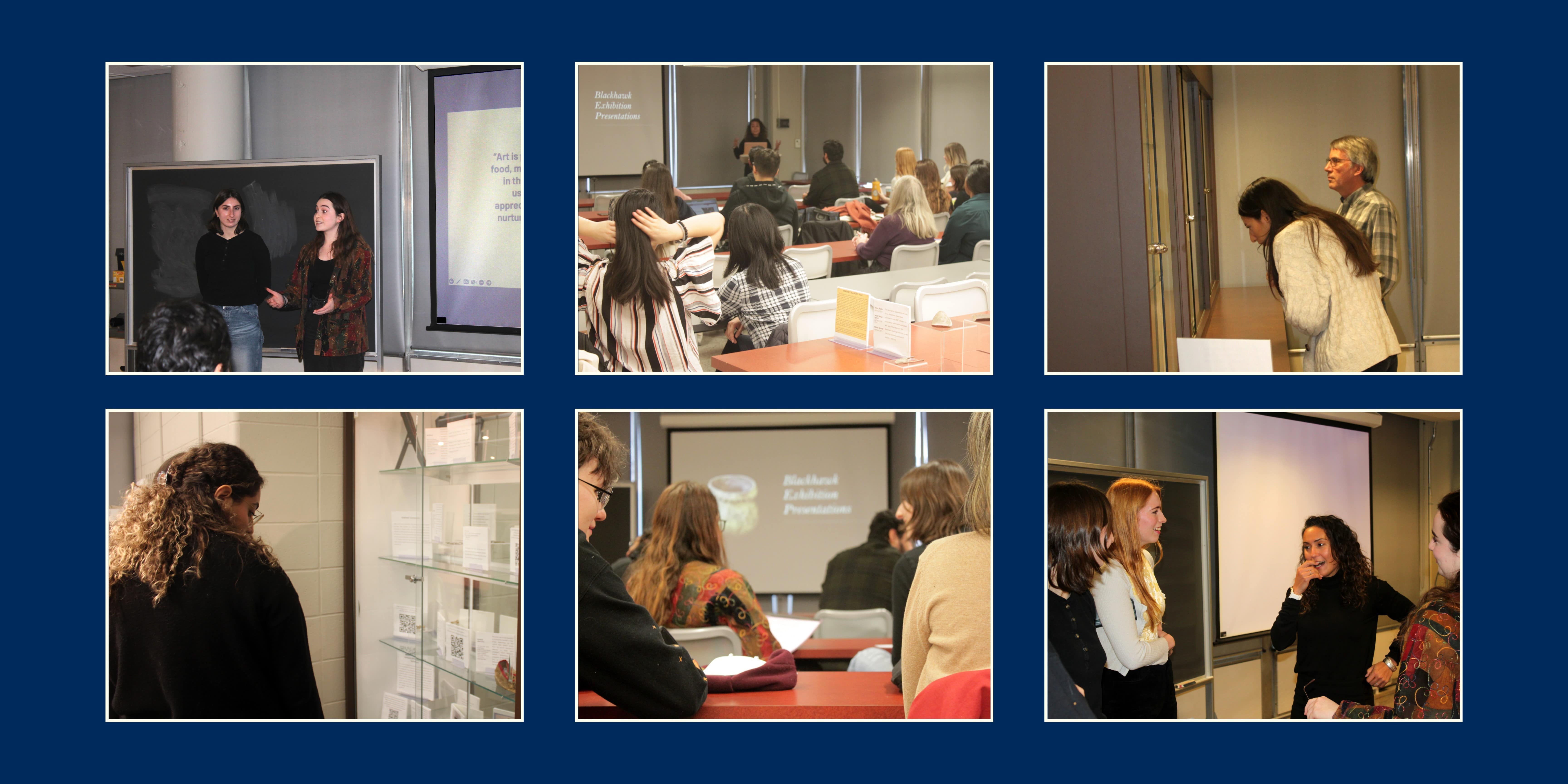
A recent exhibition by undergraduate students presented select objects and artifacts from an early twentieth century anthropological collection, challenging standard museum display conventions.
The exhibition, “Hidden Histories: The Blackhawk Collection,” was presented by students in Professor Lindsay M. Montgomery’s course ANTH390: Indigenous Archaeologies, on Wednesday, December 7.
During the showcase, students shared details about their exhibition themes, including topics such as “The Generalization of Indigenous Past, Present, and Future” and “Cultural Change in a Non-Linear World,” providing frameworks through which to view the exhibit.
Audience members then headed to the glass display cases, where students had arranged images, interactive QR codes, and objects such as a beaded necklace, moccasin, a belt, bullet casings, and even dried buffalo dung. These objects were accompanied by short text prompts and labels featuring student interpretations along with quotes from Indigenous theorists and artists related to the objects on display.
These texts encouraged viewers to reconsider how they view or consume exhibitions. For example, one group placed mirrors at the back of their display case and turned “material intended to be worn” away from the audience. While looking at the objects, viewers also had to look at themselves, prompting them to consider their power and position as an observer.
The exhibition’s objects are part of the University of Toronto’s Blackhawk Teaching Collection, which contains more than 400 archaeological and ethnographic objects. These items were obtained from the Blackhawk Indian Remedy Company, a natural herb remedy company founded in Toronto in 1933 by John R. Cressy.
The objects were acquired by Cressy during the 1930s and 40s, by encouraging readers of the company newsletter, “Teepee News,” to send in ‘relics,’ promising to send customers valuable ointments and goods in exchange.
Readers obliged, sending the company stone tools, jewelry, ceramics, and other objects, receiving valuables such as inhalers, soap bars, radio runners, and cash in return.
Although these objects were never formally displayed, the company recognized that “many of these relics are worthy and entitled to a story.” Ninety years later, the Blackhawk collection has finally been given a story by Professor Montgomery’s students who worked hard to present a unique and informed narrative of these objects, and viewers reaped the benefit.
The exhibition continues to be displayed in the University of Toronto’s Anthropology Building, room AP 130.


